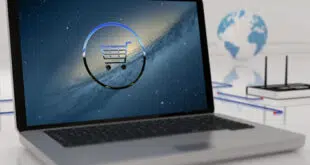To outsiders, Google’s mobile-payment services have experienced a few identity crises along the way. But the service now known as Google Pay represents much more than a rebranding, according to Jack Connors, the executive who heads commerce and merchant partnerships at Google, the primary subsidiary of Mountain View, Calif.-based Alphabet Inc.
Google Pay debuted in February as the successor to Android Pay, which was named after Google’s mobile operating system. Earlier iterations included Google Wallet and Google Checkout, the latter of which debuted in 2006. While some observers poked fun at Google for all the names it has used for its merchant and person-to-person payment services over the years, under the hood Google Pay represents a unification of Google services and will make mobile payments easier and more attractive for merchants and consumers alike, according to Connors.

“In the last year at Google, we’ve done a lot with Google Pay,” Connors said at last week’s Mobile Payments Conference in Chicago. “Google Pay is much more than it was a year ago.”
In recent months, the payment service expanded to more countries, became available on Apple Inc.’s Safari browser as well as on desktops running Google’s Chrome browser, and added a feature to hold transit passes, Connors noted.
For online merchants, the new Google Pay more easily moves shoppers from search to checkout. “The world wants a unified, seamless experience at checkout,” he said. “The distance between the expression of some demand, the search, and the transaction has to collapse, has to collapse. So Google Pay is a way to give retailers who want to compete the opportunity to do their best equivalent of a one-click checkout.”
Google Pay is now the payment channel for anyone with a Google account that accesses such products and services as Gmail, Chrome, YouTube, Google Maps, Waze, and others. He noted that Google Play, the app marketplace for Android devices, has 1 billion active users. Previous payment procedures didn’t make the links among Google products clear, according to Connors.
“If you have a Google account, the good news is that if you add a credit card, you can use that credit card on Google properties, and with Google Pay on non-Google properties.”
Google Pay received additional utility about three weeks ago when capabilities to store tickets and airline boarding passes went live. Whereas a similar feature with Apple’s Apple Pay service displays boarding passes with QR codes, Google Pay not only displays QR codes, but also allows the passenger to redeem a pass faster by using near-field communication contactless technology, Connors said.
In the works for Google Pay are enhanced capabilities on desktop computers, improved security through mobile-device authentication, and added person-to-person payment features, including post-purchase bill splitting, according to Connors. Google Pay also could find new uses through the Google Payments application programming interface that enables third-party software developers to integrate payments into smart-speaker systems such as Google Home, messaging, and other services.





